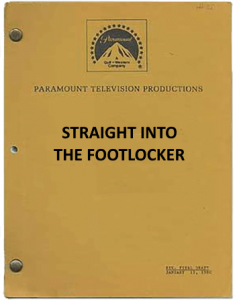
Writing terrible screenplays taught me how to write incredible novels.
The kind of boilerplate, structure-heavy, paint-by-numbers writing advice powered me through the first quarter of a million (unread and unpublished) words of writing.
Screenplays are blueprints.
They must be written for a lot of different audiences – everybody but the final audience! You have to communicate to the sound guys and the lighting guys and the money counters and so on and so forth. You’re really more like a symphony director when you write a screen play, with your focus constantly shifting from one section of the symphony to the next. A director is always looking for the right section to direct his attention at any one moment and has to trust his direction will carry all the other sections through while he is otherwise “distracted”.
Which isn’t so different from writing for a lone reader, come to think of it. You can only operate in discrete moments. Readers can only process one line at a time,
so you have to deal with each little bit of the setting, character, plot at a time. Sure, you can double up at times – wave at both the first and second violins – but in the micro-scale of writing, for the most part you’re constantly juggling what’s important RIGHT NOW. As a burgeoning writer, dealing with the here and now made the process of assembling a full novel ultimately achievable. One word at a time.
If it’s daytime you mention the hot sun and stark shadows, and that fixes in the reader’s mind while you turn his attention toward the protagonist’s mood.
So maybe not so different after all.
But this isn’t nuts-and-bolts, not superstructure.

